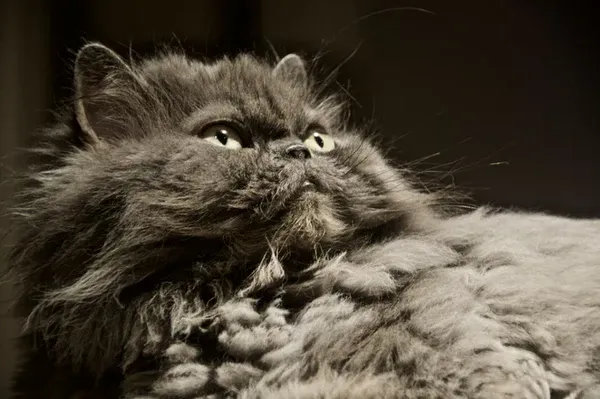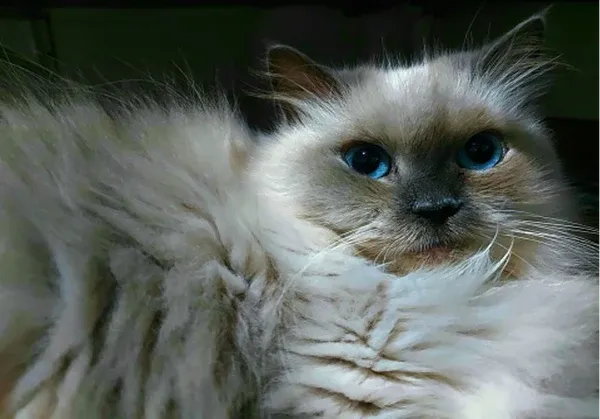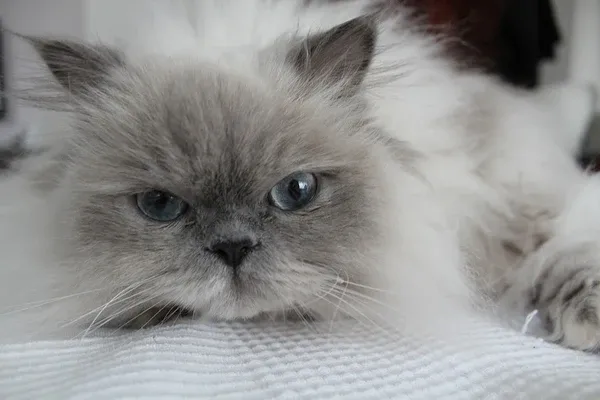Are you the proud owner of a stunning cat with Siamese-like markings but a plush, Persian-style coat? The Himalayan Siamese Cat often confuses newcomers due to its striking resemblance to the classic Siamese. However, this beautiful hybrid breed combines the best of Persian and Siamese traits, making it a unique companion for cat lovers. Whether you’re exploring common house cat breeds or considering one for your home, understanding the Himalayan Siamese cat’s origins, personality, health, and care needs is crucial for providing the best life possible.
These cats feature the signature colorpoint pattern—darker ears, face, tail, and paws—with vivid blue eyes and a long, silky coat. Originating from deliberate crosses between Persians and Siamese, they demand specific grooming and health monitoring to thrive.
What Is a Himalayan Siamese Cat?
The Himalayan Siamese cat, often simply called a Himalayan, is not a direct mix of Siamese and another breed but a distinct variety recognized separately by major cat registries. The Cat Fanciers’ Association (CFA) in the U.S. has acknowledged Himalayans as their own breed since 1957, while the Governing Council of the Cat Fancy (GCCF) in the U.K. classifies them as Colorpoint Persians, a variant of the Persian breed.
Bred from Persian-Siamese crosses, Himalayans inherit the Persian’s stocky, cobby body and long hair alongside the Siamese point coloration and piercing blue eyes typical of oriental breeds. This blend results in a cat that’s more laid-back than the vocal Siamese but equally affectionate.
 Beautiful Himalayan Siamese cat posing confidently
Beautiful Himalayan Siamese cat posing confidently
“Yes, I know I’m beautiful!”
Source: Dan Dennis (Unsplash)
Key Differences Between Himalayan and Siamese Cats
Despite shared markings like seal, chocolate, blue, and lilac points, Himalayan Siamese cats differ significantly from pure Siamese in build, grooming, and lifespan. Their Persian influence gives them a broader head, shorter legs, and luxurious long fur, contrasting the Siamese’s sleek, elegant frame.
Here’s a comparison of adult traits:
| Characteristic | Himalayan Adult | Siamese Adult |
|---|---|---|
| Average Height | 25.4–30.5 cm | 20.3–25.4 cm |
| Average Weight | 3.2–5.4 kg | 3.6–5.4 kg |
| Life Expectancy | 9–15 years | 12–15 years |
| Grooming Needs | High (daily brushing) | Low |
Himalayans’ long coats require extensive care to prevent matting, unlike the minimal shedding of Siamese. Their shorter lifespan often ties to hereditary issues from Persian lineage.
 Close-up of Himalayan cat's piercing blue eyes
Close-up of Himalayan cat's piercing blue eyes
“Look into my eyes…”
Source: Arafat Bachmid (iStock)
Growth and Development of Himalayan Kittens
Himalayan Siamese kittens follow growth patterns similar to Siamese, reaching maturity around 12 months. Weaning occurs at 6–8 weeks, followed by rapid weight gain. Monitor closely during growth spurts, as they need extra calories.
Typical weight milestones:
| Week | Approximate Weight |
|---|---|
| Week 1 | 50–150 g |
| Week 2 | 150–250 g |
| Week 3 | 250–350 g |
| Week 4 | 350–450 g |
| Week 5 | 450–550 g |
| Weeks 6–9 | 550–850 g |
Post-9 weeks, steady growth continues to adult size, genetically predetermined. Watch eating habits—constant hunger signals a spurt. For insights into various domestic cat breeds, compare growth rates.
Personality Traits of Himalayan Siamese Cats
Himalayan Siamese cats inherit a calmer demeanor from Persians, differing from the high-energy, chatty Siamese. They’re placid, friendly indoor dwellers who rarely seek outdoor adventures, preferring laps and quiet spots.
Common traits include:
- Family-friendly: Affectionate with all household members, less anxious or aggressive than some Siamese. They warm to strangers after initial observation.
- Trainable: Responsive like their parent breeds, though their love of comfort may limit play sessions. Capitalize on bursts of energy for bonding.
- Pet-compatible: Tolerant of other animals if given space.
These qualities make them ideal for multi-pet homes or families exploring grey cat breeds.
Common Health Concerns for Himalayan Siamese Cats
Himalayans face breed-specific issues due to their brachycephalic (flat-faced) structure and genetics. Regular vet check-ups are essential, as per guidelines from the CFA and veterinary experts.
Key concerns:
- Respiratory issues and asthma: Short noses lead to breathing difficulties, infections, tear staining, corneal ulcers, and sequestration.
- Kidney disease: Polycystic kidney disease (PKD) causes cysts; monitor water intake and urination.
- Heart conditions: Arrhythmias require screening for murmurs.
- Urinary problems: Prone to UTIs, bladder stones, and cystitis, especially neutered males—seek immediate care for straining.
- Hair loss and hairballs: Seasonal shedding worsens with long coats; daily grooming helps.
Early detection via genetic testing (e.g., for PKD) improves outcomes. For active lifestyles, consider breeds suited to outdoor cat breeds.
 Relaxed Himalayan cat resting comfortably
Relaxed Himalayan cat resting comfortably
“Do not disturb! I’m busy!”
Source: Pixabay
Optimal Nutrition and Feeding for Himalayan Siamese Cats
Proper diet supports health, managing weight and coat quality. Focus on high-protein, low-carb meals mimicking their carnivorous needs: meat/fish as primary ingredients, animal fats for energy and palatability.
Essential components:
- Proteins: Chicken, salmon, tuna, mackerel for taurine, arginine—vital for heart, eyes, muscles.
- Fats: From gravies/jellies for taste and calories.
- Avoid: Grains, carbs (risk obesity, diabetes, pancreatitis); opt for grain-free formulas.
Feed based on age, activity, and health—kittens need frequent meals, seniors lower calories. Wet food aids hydration, reducing UTI risks. Consult vets for personalized plans, drawing from AVMA nutrition guidelines.
 Premium food bowl prepared for a Himalayan Siamese cat
Premium food bowl prepared for a Himalayan Siamese cat
“The best of the best for your Himalayan!”
Image © Untamed (adapted for reference)
Conclusion: Thriving with Your Himalayan Siamese Cat
The Himalayan Siamese cat blends elegance, affection, and unique needs—regular grooming, vigilant health checks, and species-appropriate nutrition ensure a happy 9–15 years. By understanding differences from Siamese, tracking growth, and addressing hereditary risks, you’ll provide expert care backed by breed registries like CFA.
Consult your veterinarian for tailored advice, and explore more on our site for comprehensive pet parenting. Share your Himalayan stories in the comments!
References
- Cat Fanciers’ Association (CFA): cfa.org
- Governing Council of the Cat Fancy (GCCF): gccfcats.org
- American Veterinary Medical Association (AVMA) Nutrition Guidelines
- Veterinary studies on PKD in Persians/Himalayans (e.g., Journal of Feline Medicine and Surgery)
